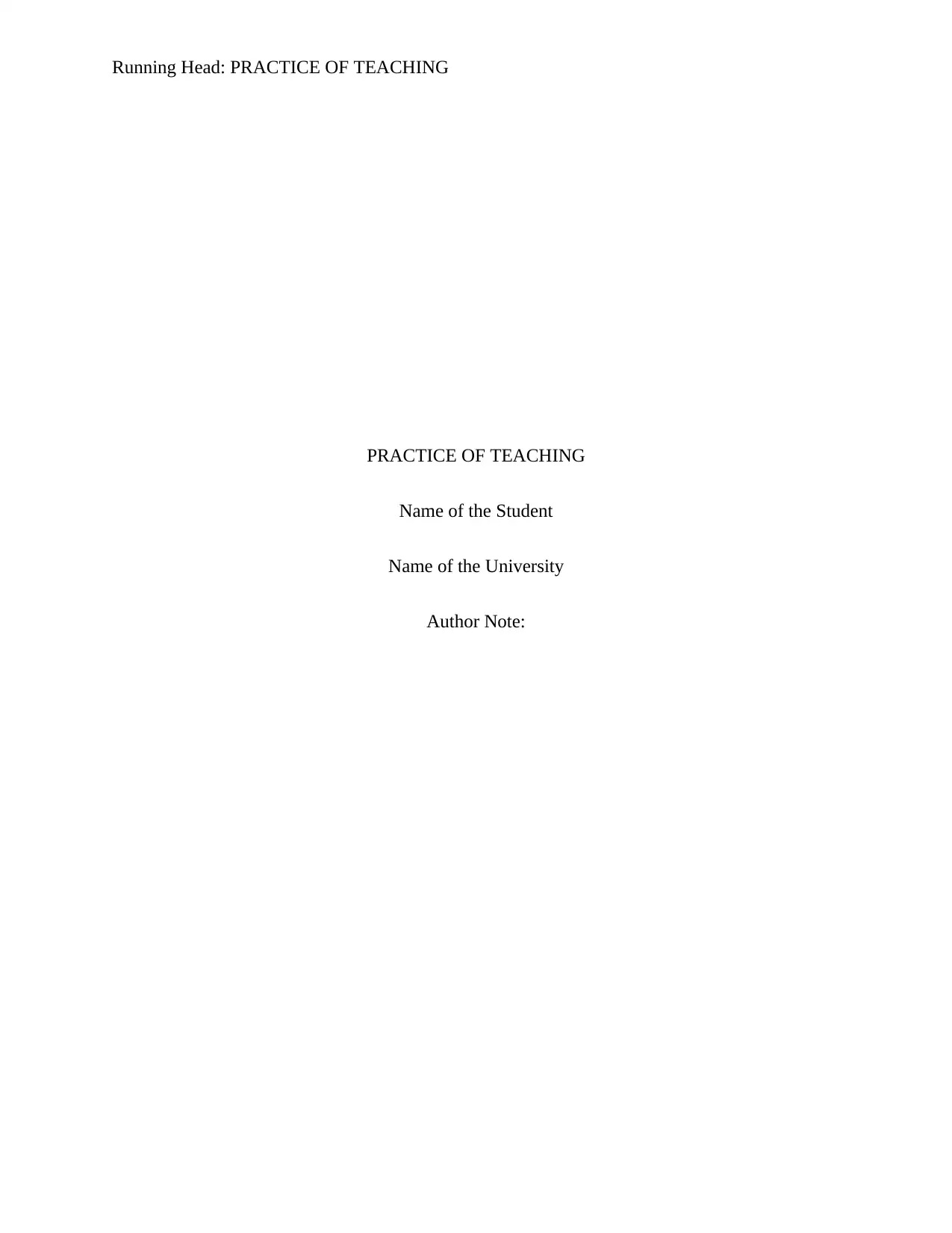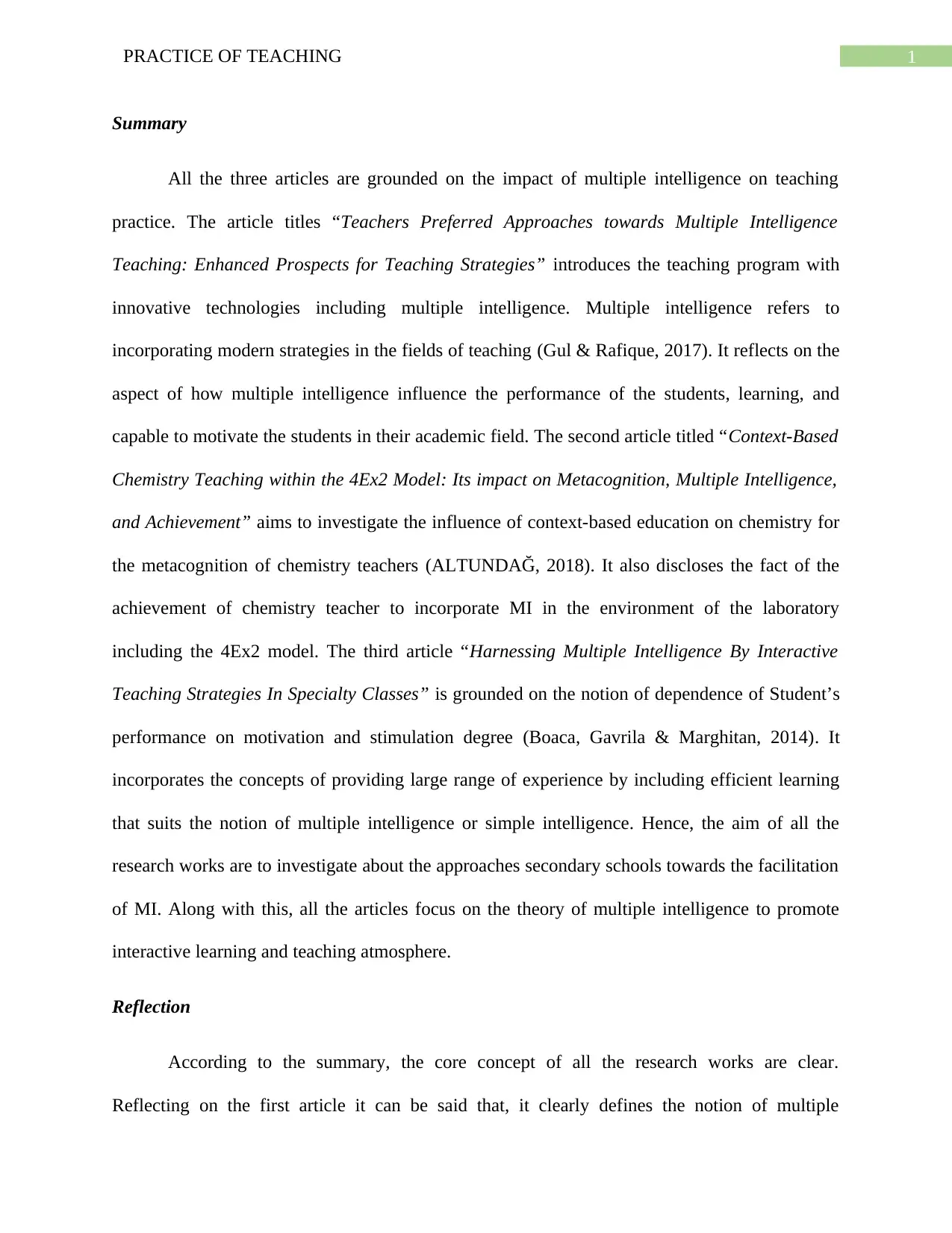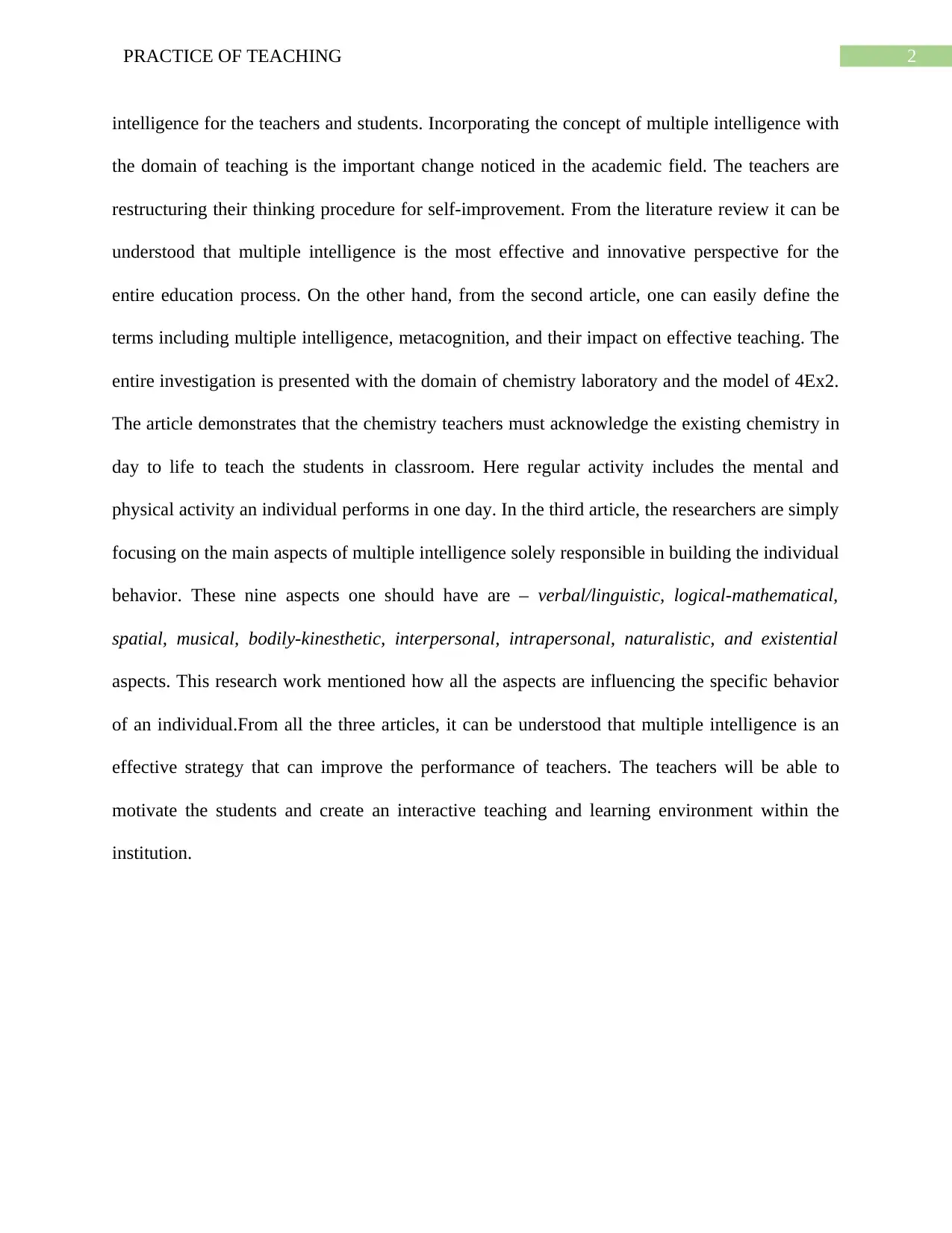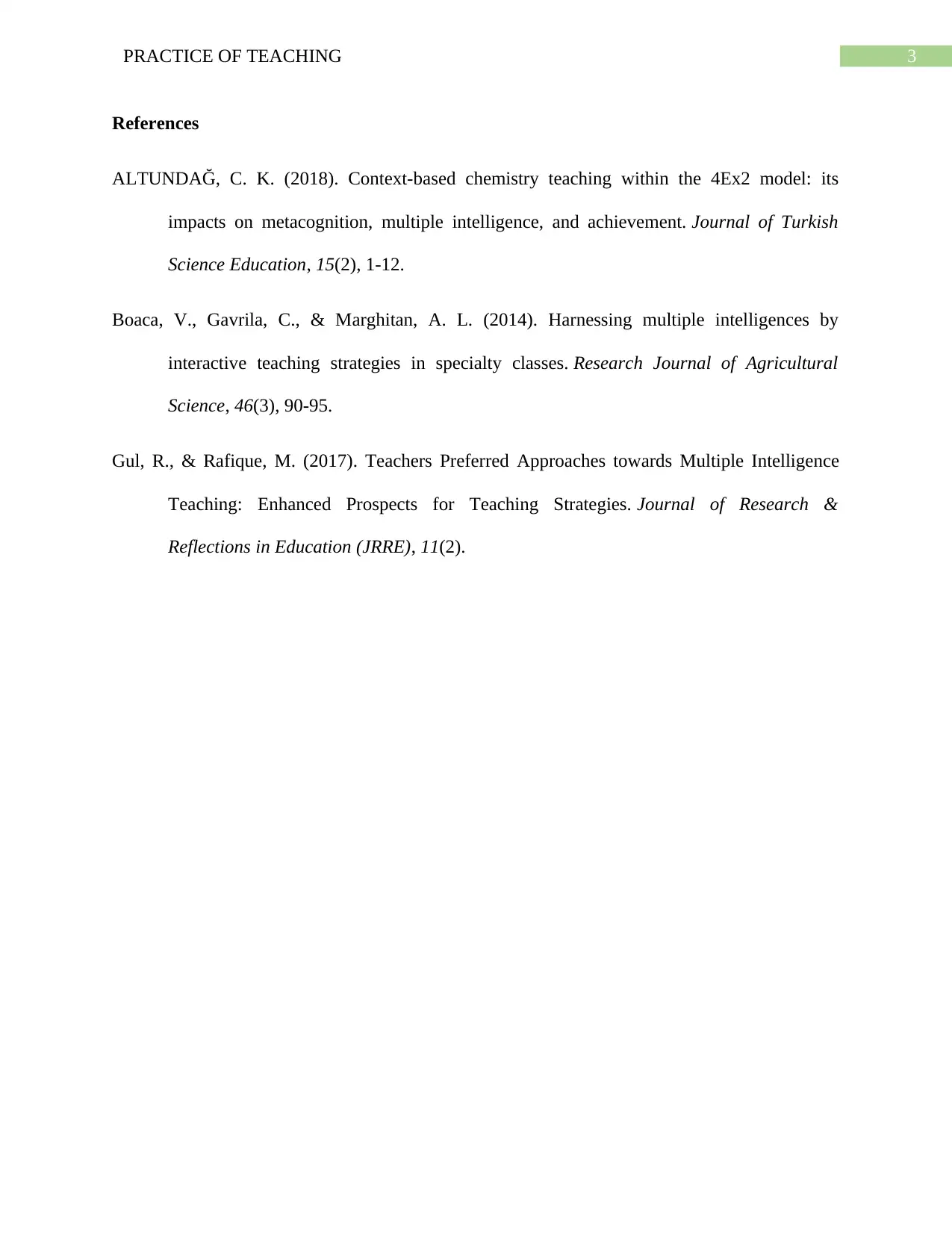Analyzing Multiple Intelligence Influence on Teaching and Learning
VerifiedAdded on 2022/08/19
|4
|726
|19
Report
AI Summary
This report provides a comprehensive overview of the impact of multiple intelligences (MI) on teaching and learning practices, drawing insights from three research articles. The first article emphasizes the integration of MI with innovative technologies to enhance teaching strategies, highlighting its influence on student performance and motivation. The second article investigates the effects of context-based chemistry education, specifically the 4Ex2 model, on metacognition and MI in chemistry teachers. The third article focuses on the role of interactive teaching strategies in specialty classes, emphasizing the importance of providing varied experiences to match students' dominant intelligences. All three articles collectively support the notion that MI is an effective approach to improve teacher performance, motivate students, and foster interactive learning environments. The report reflects on the core concepts of each article, highlighting key findings, and references relevant literature to support the analysis.
1 out of 4











![[object Object]](/_next/static/media/star-bottom.7253800d.svg)